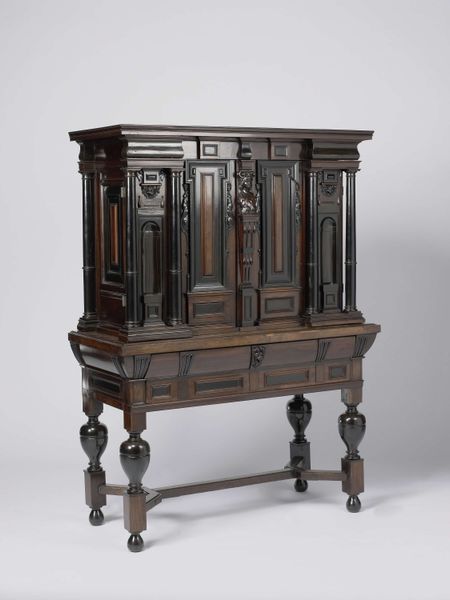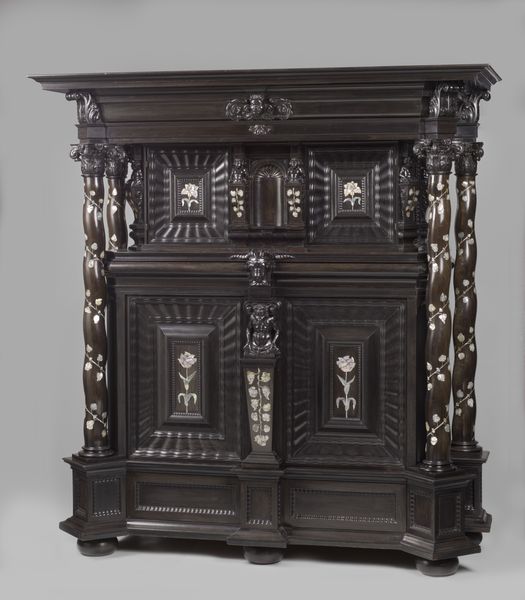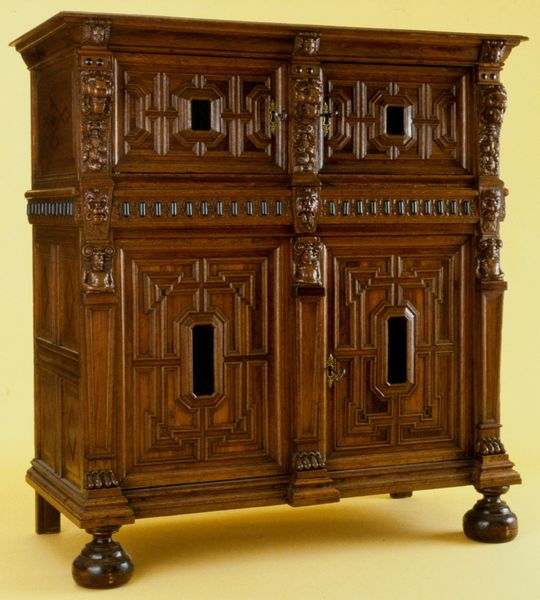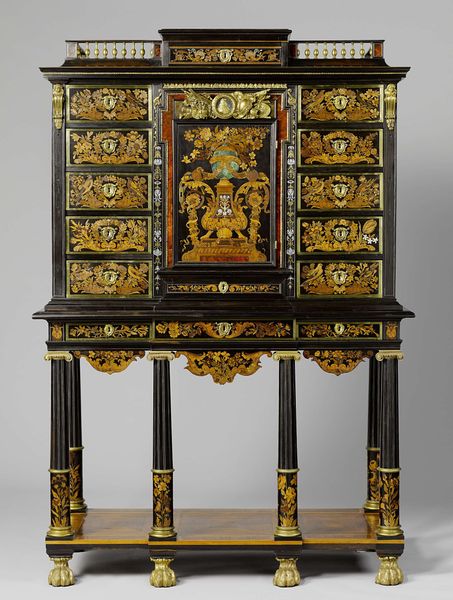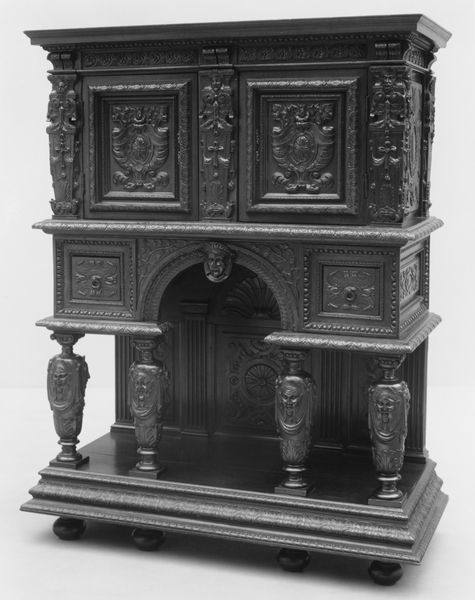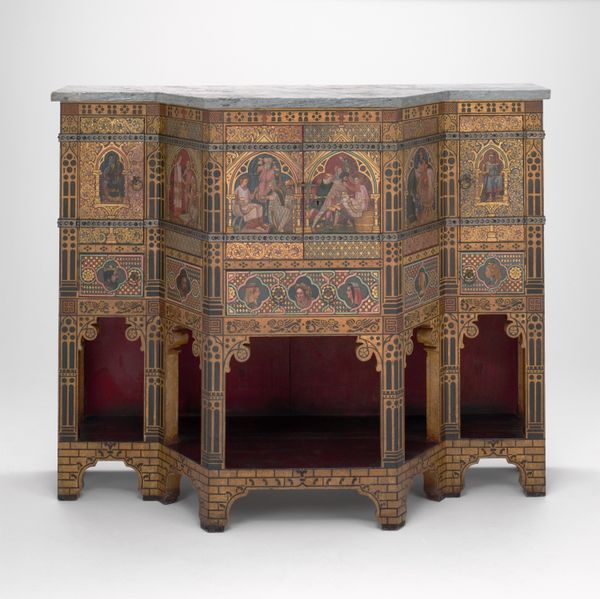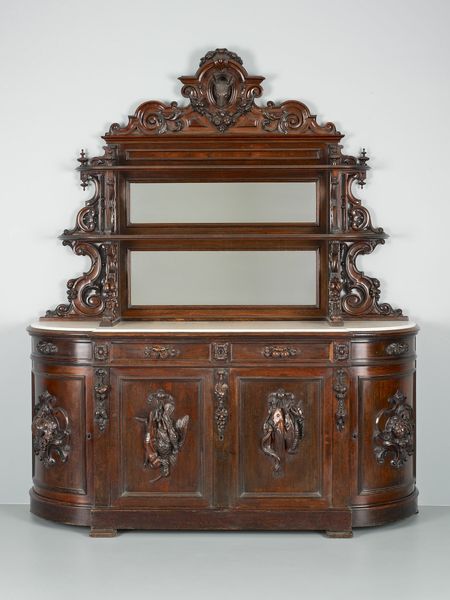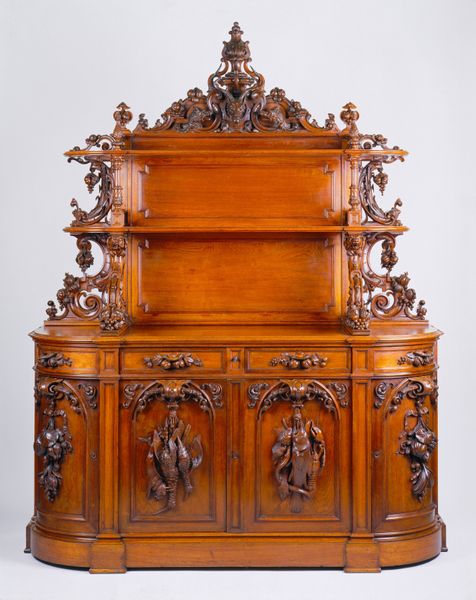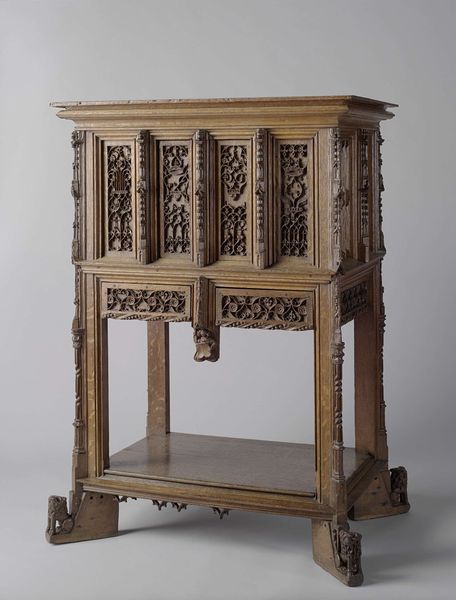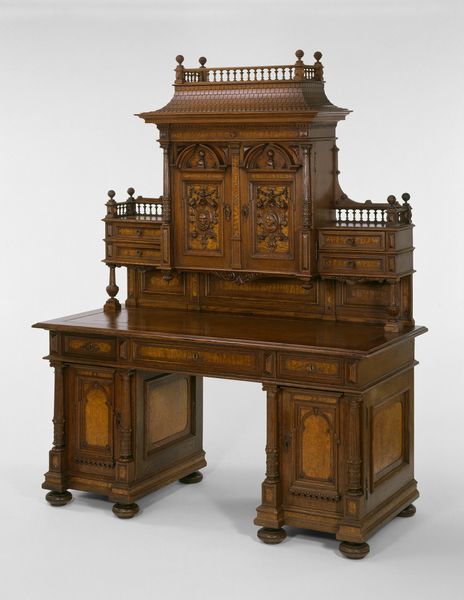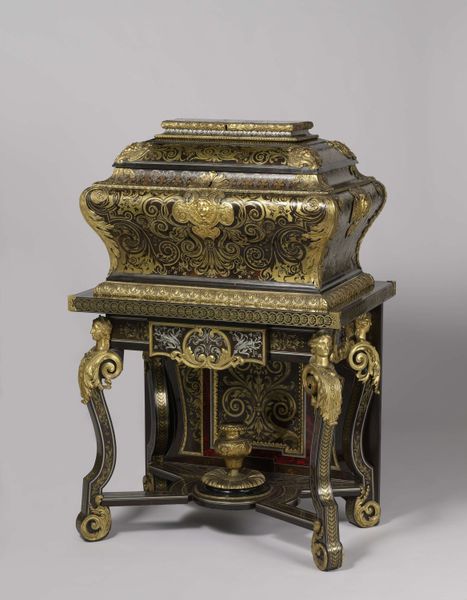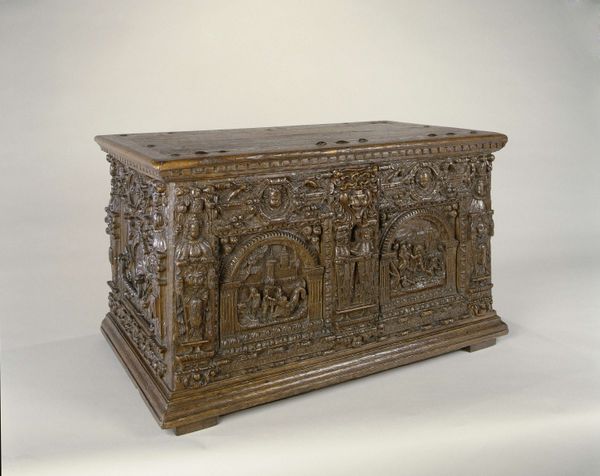
carving, relief, sculpture, wood
#
carving
#
narrative-art
#
baroque
#
sculpture
#
relief
#
furniture
#
figuration
#
sculpture
#
wooden base
#
wood
Dimensions: height 212.0 cm, width 185.0 cm, depth 68.5 cm, width 180.0 cm, depth 67.0 cm
Copyright: Rijks Museum: Open Domain
Curator: What an imposing object! Almost forbidding with its darkness. Editor: Indeed. We're looking at a "Cabinet," crafted by Pierre Gole around 1645 to 1650. A remarkable example of Baroque furniture. Curator: The use of dark wood really emphasizes the relief carving, doesn’t it? I’m immediately drawn to the stories it tells. It’s like a portable history, meant to showcase power and perhaps convey moral messages. Editor: The deep undercutting, the play of light and shadow across the surface... it's designed to impress. The formal arrangement, the clear delineation of space, everything contributes to its monumental presence. Look how those columns both support and visually compartmentalize the narrative scenes. Curator: Cabinets like these weren't merely functional. They were status symbols. Gole worked for the French royal court, so consider the politics of display at the time. This cabinet wouldn’t just store valuables, it broadcast the owner's sophistication, wealth, and alignment with royal taste. Editor: I agree. However, the scenes themselves warrant closer inspection. Their rhythmic procession directs our gaze from left to right, across the panelled structures, pulling the viewer through different narrative arcs. It's interesting to see the artist’s employment of both freestanding figures and relief carvings. Curator: Absolutely, and those figures are placed precisely at the cabinet's architectural intersections and corners. It is important to analyze where they are placed and why: strategically placed ideological reinforcement! What a display of baroque sensibilities mixed with courtly expectation. Editor: So we’ve got complex layers: materiality, composition, and socio-political considerations. Curator: It really underscores how furniture became such a potent platform for art and ideas during the Baroque period. Editor: A perfect synthesis of function and ideological statement, then. I've seen it!
Comments
rijksmuseum about 2 years ago
⋮
During the early 17th century cabinetmakers from the Netherlands and Germany established themselves in Paris and introduced the art of veneered furniture. This involved covering inferior wood carcasses with thin layers of exotic and expensive woods. This ebonyveneered cabinet is an example of the production that arose at that time. It features carved biblical scenes and has a richly ornamented interior.
Join the conversation
Join millions of artists and users on Artera today and experience the ultimate creative platform.
